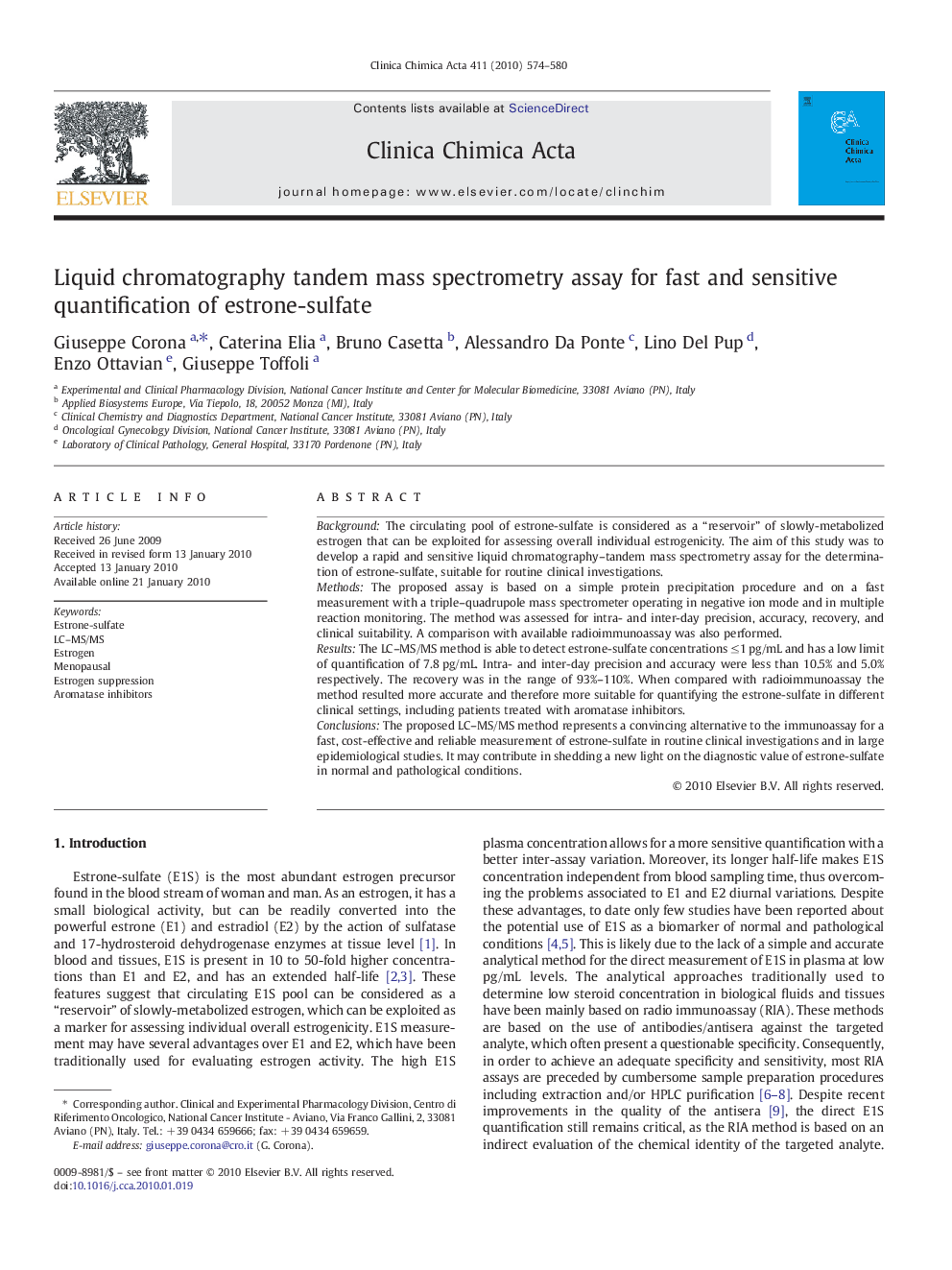| Article ID | Journal | Published Year | Pages | File Type |
|---|---|---|---|---|
| 1966246 | Clinica Chimica Acta | 2010 | 7 Pages |
BackgroundThe circulating pool of estrone-sulfate is considered as a “reservoir” of slowly-metabolized estrogen that can be exploited for assessing overall individual estrogenicity. The aim of this study was to develop a rapid and sensitive liquid chromatography–tandem mass spectrometry assay for the determination of estrone-sulfate, suitable for routine clinical investigations.MethodsThe proposed assay is based on a simple protein precipitation procedure and on a fast measurement with a triple–quadrupole mass spectrometer operating in negative ion mode and in multiple reaction monitoring. The method was assessed for intra- and inter-day precision, accuracy, recovery, and clinical suitability. A comparison with available radioimmunoassay was also performed.ResultsThe LC–MS/MS method is able to detect estrone-sulfate concentrations ≤1 pg/mL and has a low limit of quantification of 7.8 pg/mL. Intra- and inter-day precision and accuracy were less than 10.5% and 5.0% respectively. The recovery was in the range of 93%–110%. When compared with radioimmunoassay the method resulted more accurate and therefore more suitable for quantifying the estrone-sulfate in different clinical settings, including patients treated with aromatase inhibitors.ConclusionsThe proposed LC–MS/MS method represents a convincing alternative to the immunoassay for a fast, cost-effective and reliable measurement of estrone-sulfate in routine clinical investigations and in large epidemiological studies. It may contribute in shedding a new light on the diagnostic value of estrone-sulfate in normal and pathological conditions.
